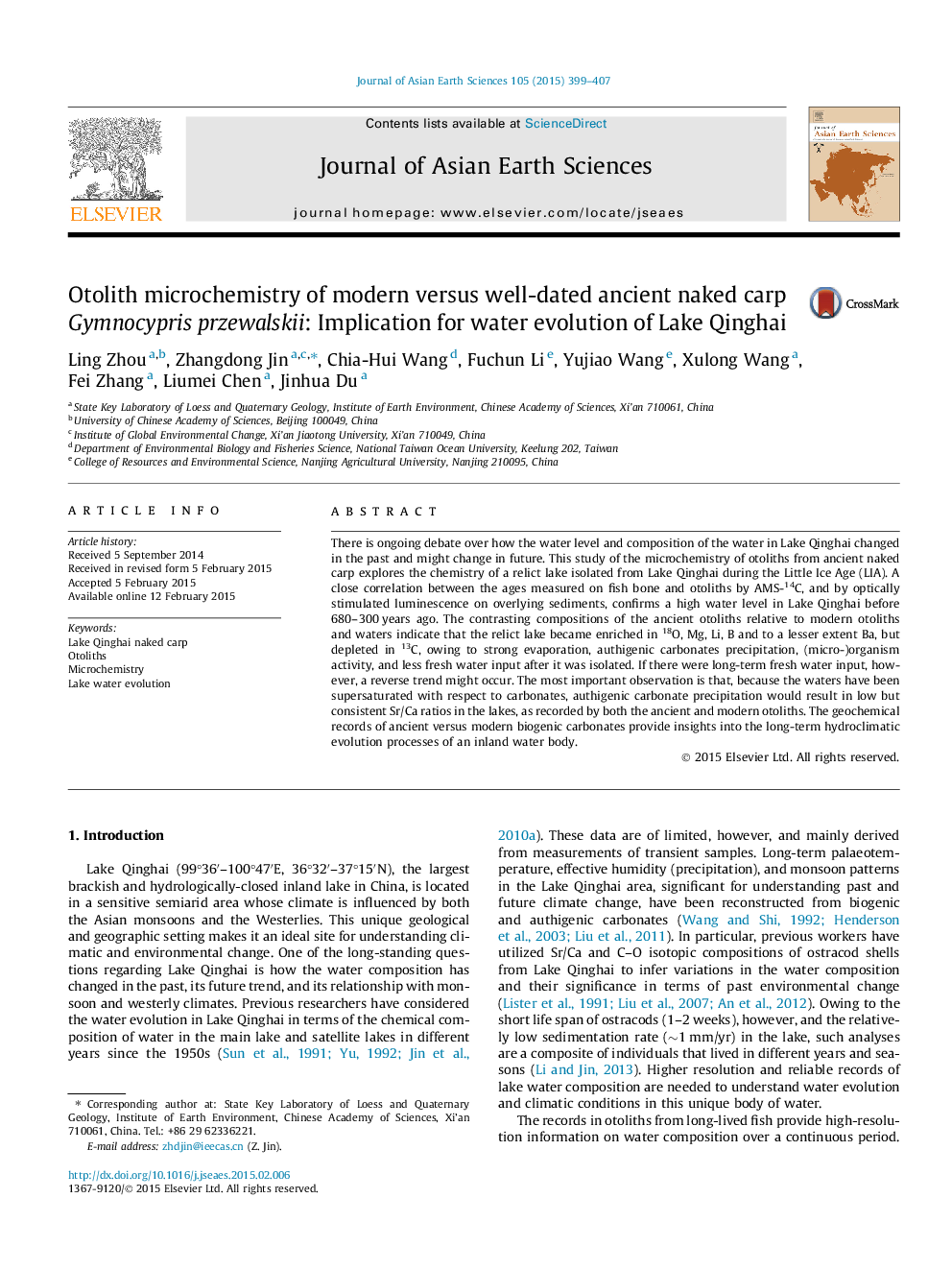| Article ID | Journal | Published Year | Pages | File Type |
|---|---|---|---|---|
| 4730506 | Journal of Asian Earth Sciences | 2015 | 9 Pages |
•The ancient naked carp bone was firstly excavated near the Bird Island, Lake Qinghai.•Well dating correlation of ancient fishbones AMS-14C and overlying sediments OSL.•A high lake level of Lake Qinghai occurred during the Little Ice Age.•Ancient otolith geochemistry provides new insight into Lake Qinghai water evolution.
There is ongoing debate over how the water level and composition of the water in Lake Qinghai changed in the past and might change in future. This study of the microchemistry of otoliths from ancient naked carp explores the chemistry of a relict lake isolated from Lake Qinghai during the Little Ice Age (LIA). A close correlation between the ages measured on fish bone and otoliths by AMS-14C, and by optically stimulated luminescence on overlying sediments, confirms a high water level in Lake Qinghai before 680–300 years ago. The contrasting compositions of the ancient otoliths relative to modern otoliths and waters indicate that the relict lake became enriched in 18O, Mg, Li, B and to a lesser extent Ba, but depleted in 13C, owing to strong evaporation, authigenic carbonates precipitation, (micro-)organism activity, and less fresh water input after it was isolated. If there were long-term fresh water input, however, a reverse trend might occur. The most important observation is that, because the waters have been supersaturated with respect to carbonates, authigenic carbonate precipitation would result in low but consistent Sr/Ca ratios in the lakes, as recorded by both the ancient and modern otoliths. The geochemical records of ancient versus modern biogenic carbonates provide insights into the long-term hydroclimatic evolution processes of an inland water body.
